Why do you need ski helmets and how to choose them?
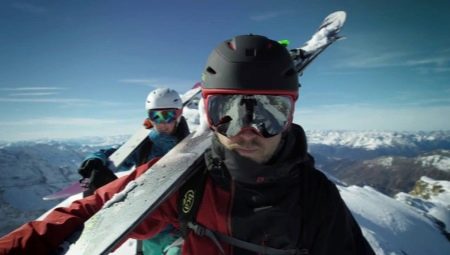
Any rider or extreme skiing takes care of his safety. In the material of this article, we will talk about the purpose, types of ski helmets and the main criteria for their selection.
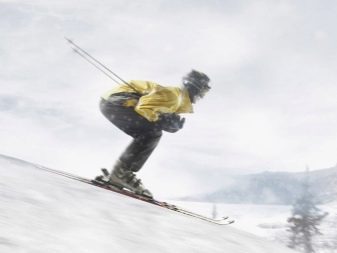
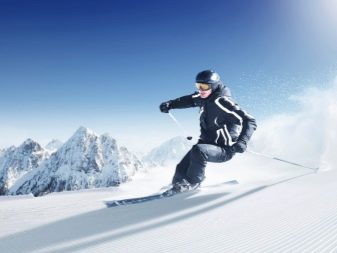
Description and purpose
A ski helmet is a simple protective outfit. It is part of the sports equipment for beginners and experienced athletes. It has a rather thin but tough outer shell that distributes the impact force over the entire surface of the helmet.
The layer is made of durable plastic, thermoplastic or fiberglass (less often - from carbon and polycarbonate). The shell material determines the strength level of the part.
This part protects the inside and is responsible for maintaining its shape. It deflects hits on a tangent, prevents the penetration of fragments, is called "shell".
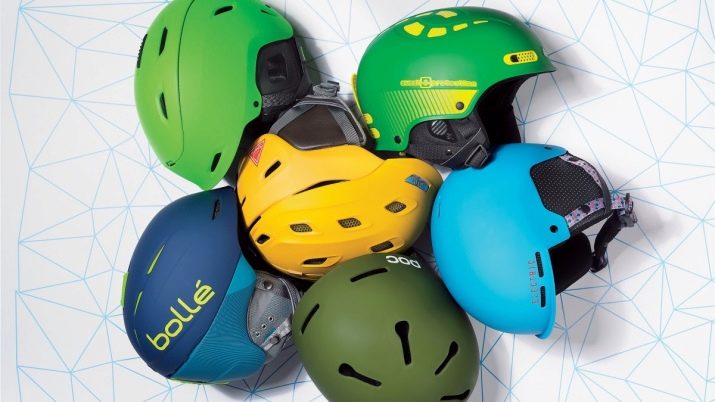
The inner shell is made of soft and thick material. Its purpose is to protect the human head from injury, including concussion. It reduces the traumatic effect, it is made from expanded polystyrene or polypropylene foam.
An obligatory part of the helmet is an antibacterial lining. It comes into contact with the skin and is necessary to wick moisture away. Increases user comfort, made from soft, quick-drying textiles.
The helmet deforms with a slight collision, splits with a strong impact. It absorbs the force of the blow, while the work of the defensive shells is interconnected. A helmet protects the mask from vapors that cloud the lens.
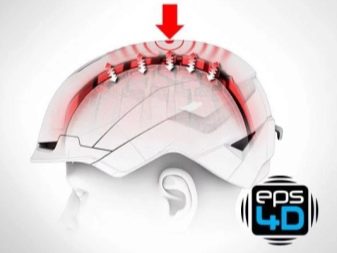
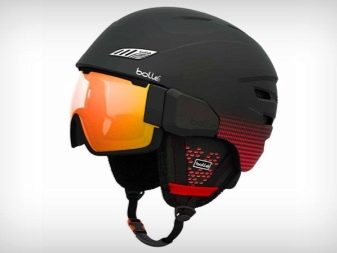
Varieties
A wide range of ski helmets is presented on the modern sporting goods market.They can be conditionally divided according to several criteria.
By type of construction
There are several types of product structure. Hardshell is a two-layer version with visually indicated separation of layers. It is made of ABS-plastic "shell" of 2 mm thickness and damping parts made of EPS. During production, all layers are reliably glued together.
Such helmets are impact-resistant, heavy, stiff, and bouncing when dropped. They are characterized by an optimal layout and can withstand high loads.
They are inexpensive, occupy the initial places in the manufacturers' lines.
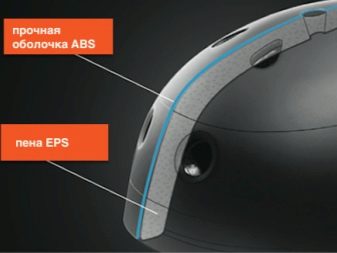
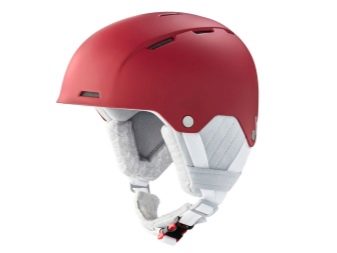
Injection molded (In-mold) - lightweight in comparison with the previous type, unstable to deformation upon impact. Equipped with a shell with no rebound effect. The impact is absorbed by the EPS layer.
The difference in the protective qualities of models with analogs of Hardshell is felt only under extreme loads (for example, tricks, jumps). These varieties weigh less, they have a greater level of comfort. Designed for recreational skiers riding at low speeds.
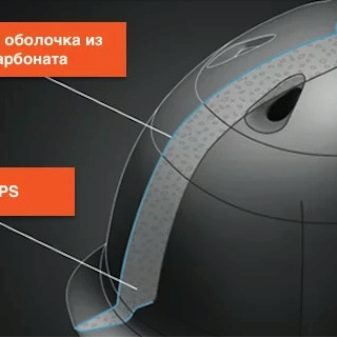
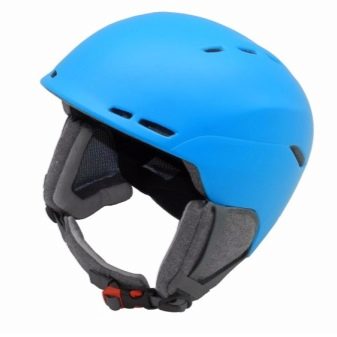
Hybrid is a combination of varieties, a cross between the Hardshell and In-mold models. In most of these designs, the occipital area and headphones are made using In-mold technology. The top of the product is made using the Hardshell method.
Combination models are characterized by reduced weight and optimal protection in the right places. They are sold in a wide range and are in special consumer demand.
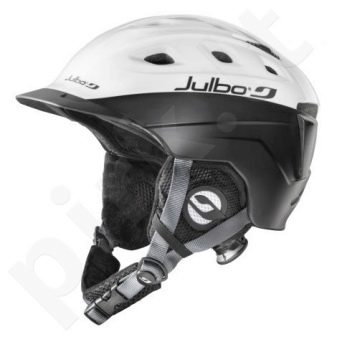
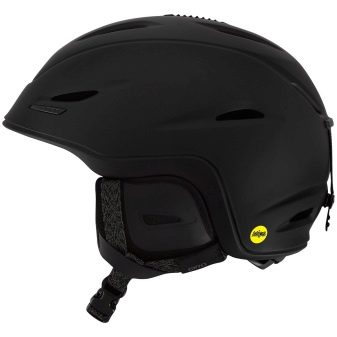
Softshell - varieties with a plastic outer shell. Made according to new technology. Under load, they are deformed, but due to the elasticity of the textures, they take their original shape without pressure. Distribute and absorb the impact over the entire surface of the helmet. Do not break in the event of a strong impact.
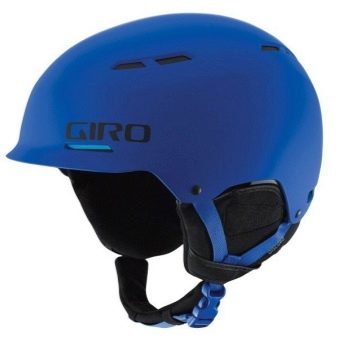
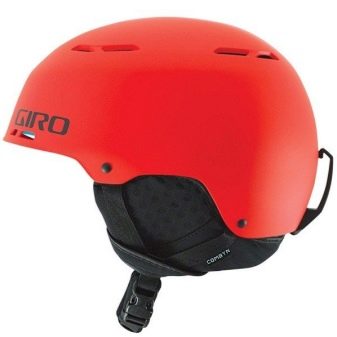
Closed and open
Snowboard helmets are divided into 2 types: closed and open. The variants of the first type are called Full-face. Such models are protective helmets that completely cover the head, face, chin.
These are reinforced structures suitable for different types of extreme skiing: "freeride", "ski cross", "boardcross". These products are quite reliable, but heavy and poorly ventilated. The disadvantage of the products is the poor fit. Masks may be included in the package, but during operation they often fog up.
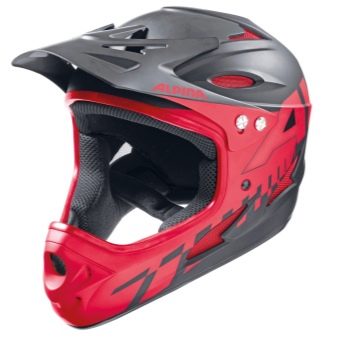
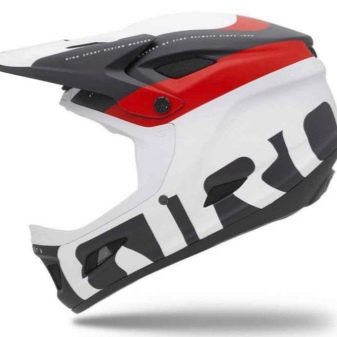
Open varieties - classic-style helmets that do not cover the face. Their weight is less than their closed counterparts. They are distinguished by an optimal level of ventilation.
Suitable for most models of manufactured masks, but they are not able to protect the front of the head. Depending on the design, they are equipped with a metal or plastic removable chin guard.
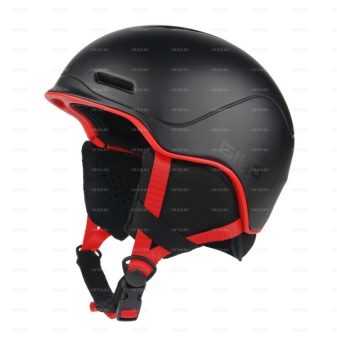
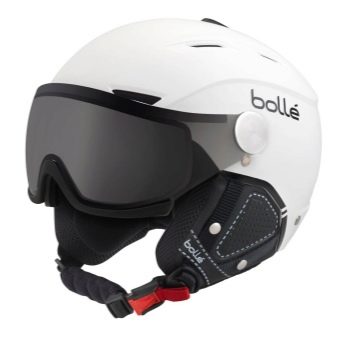
These varieties can have different types of "ears".
Variants with hard "ears" provide excellent protection for the head in case of a fall. They have excellent aerodynamics at speeds and chin protection.
The downside of the structures is their high weight, low audibility and ventilation. Such products are not very comfortable to put on and take off. They are bought by athletes who develop tremendous speeds.
Soft earbuds are more comfortable for the wearer. They are purchased by amateurs. These structures have better audibility and less weight. Models can be disassembled and cleaned.
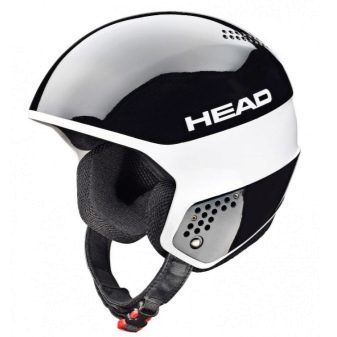
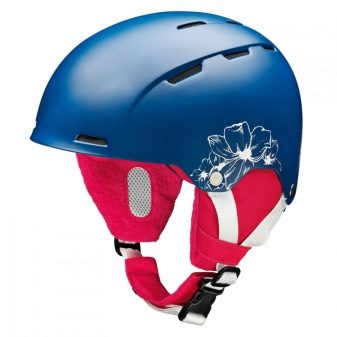
With and without visor
In addition to models without a visor (sliding glasses that replace ski goggles), there are analogues on sale with a mask mounted in a helmet. Their appearance is very aesthetic. However, in practice, such models have more disadvantages.
Often the shape of the helmet and the fixed visor does not match the anatomical features of a particular person. This causes air to enter under the visor during breathing, which causes the mask to fog up.
With a loose fit of the mask at speed, the wind gets into the eyes, the view becomes more difficult. By themselves, such designs are disposable: if the visor breaks down, it is impossible to pick up an identical one.
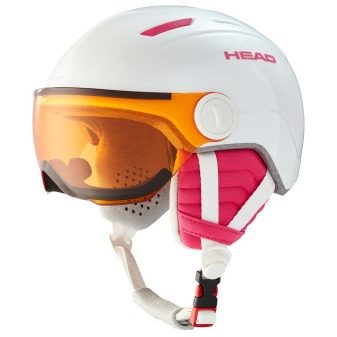
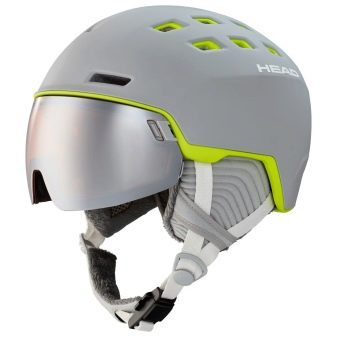
Not all visors provide transparency adjustment. They may simply not be suitable for different weather conditions. In addition, these varieties are more expensive than separately purchased helmets and masks.
The advantages declared by the sellers in fact turn out to be a publicity stunt. For designs with a visor, there is pressure on the cheekbones and nose. They often do not fulfill the functions assigned to them.
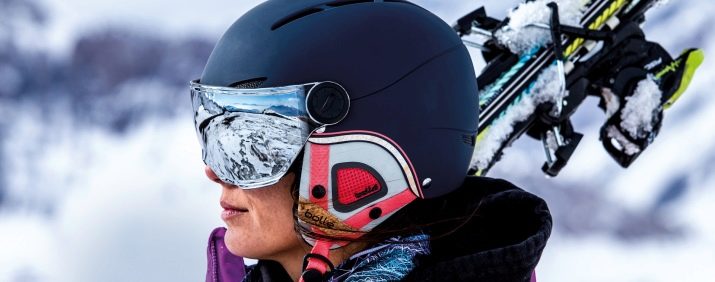
Dimensions (edit)
Ski helmets are bought by measuring the circumference of the head. Based on this, the size range of products for adults looks like this:
- XS - 53-54 cm;
- S - 55-56 cm;
- M - 57-58 cm;
- L - 59-60 cm;
- XL - 61-62 cm;
- XXL - 63-64cm;
- XXXL - 65-66 cm.
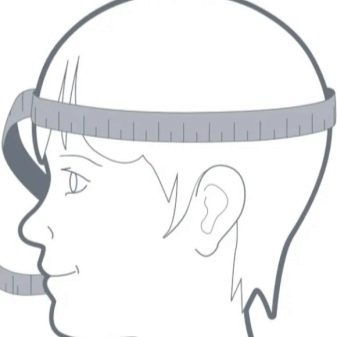
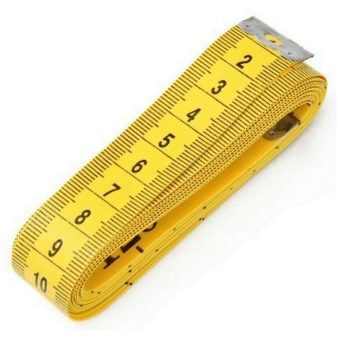
The options for kids are:
- S - 49-50 cm;
- M - 51-52 cm;
- L - 53 cm.
To get the right size, you need to try on a helmet. The product should not slip on tightly or, conversely, dangle.
It should be comfortable.
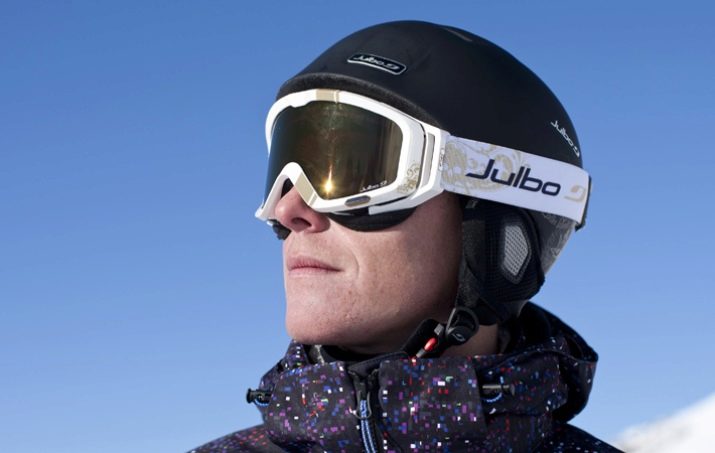
Top manufacturers
Various brands are involved in the production of ski helmets. We have compiled a quick overview of the best brands with high customer ratings.
- Salomon - a supplier of high-quality ski equipment. Produces aerodynamic helmets with a unique design and mesh perforation.
The brand's products are equipped with volume control and special protection for the temporal zones. They are distinguished by a successful fit without discomfort, designed for men, made of durable materials.

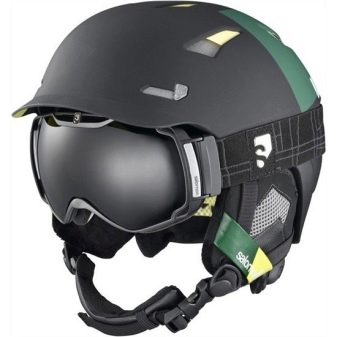
- Uvex Is a German supplier of quality ski equipment with chin protectors for extreme sports. Produces models with and without visor, mask brackets, removable ear cushions.
The shell material is ABS plastic, the range is presented in neutral, practical colors. The size range is designed for customers with different head sizes.
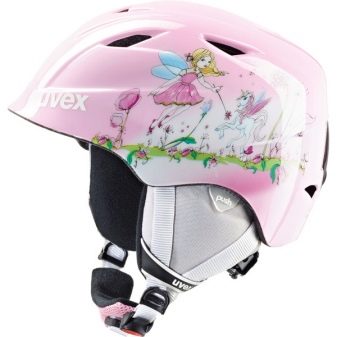
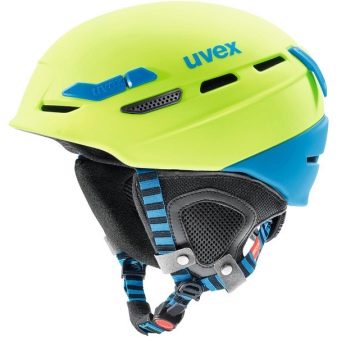
- Casco - a leading manufacturer of helmets combining the best features - style, quality and the highest possible user safety.
Designs products using Monocoque Ultra technology. As a result, it produces models of lightweight helmets for winter sports. It manufactures products with an outer shell consisting of several segments, reinforced with steel rivets.
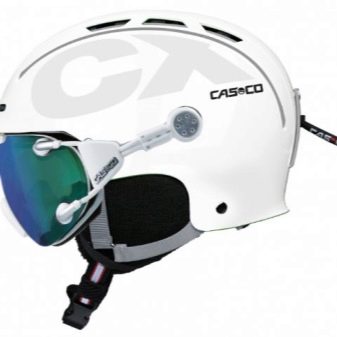
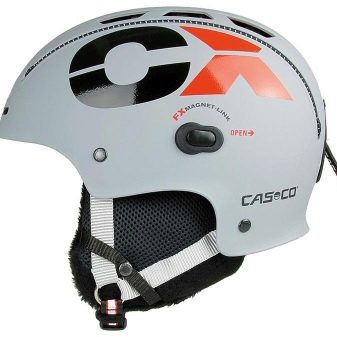
- Dainese Is a brand focused on the production of products for extreme skiing. Produces models that protect users-tricksters, equipped with micro-adjustment of the head volume.
Manufactures hybrid helmets, consisting of an ABS plastic shell and an in-mold system. The company's products have an active ventilation system, have 16 channels for air circulation.

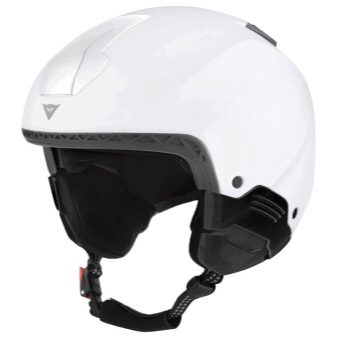
- Atomic - helmets in a sporty design with a reliable degree of head protection against falls during active descent. The company manufactures designs that allow the installation of a chin guard.
The manufacturer's products have a passive air circulation system and a removable lining.
The product is certified and meets the highest international quality standards.
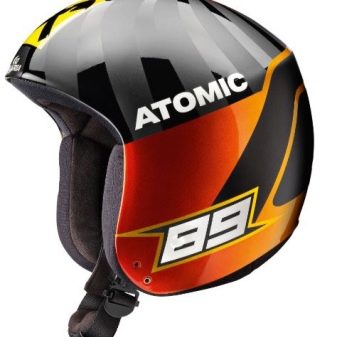
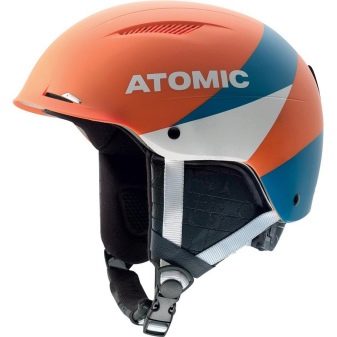
Optional accessories
The range of ski helmets is varied. The buyer can buy an option according to his own preferences. However, some models have additional details.
These can be decorations in the form of stickers or a headset (built-in audio speakers, an action camera). Famous brands supply their products with covers. The crest is a convenient bag that protects the helmet from accidental mechanical damage.
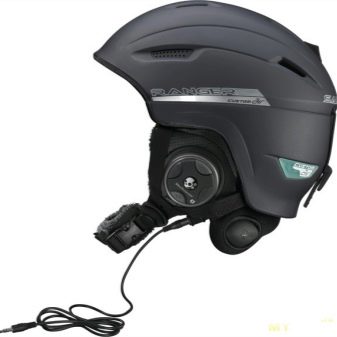
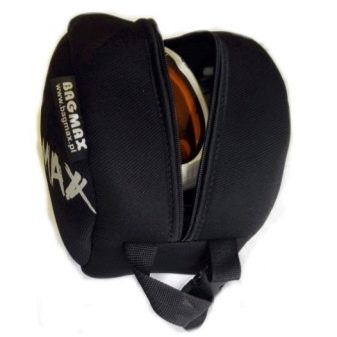
Some (mostly female) varieties are complemented by a ponytail or a bun of hair. Depending on the design, it can have a different color, be braided. Differs in length, texture of hair, hairstyle (for example, in the form of a mohawk).
The constructional element of the products is a sun visor. Its length can be different - small, medium, large. Depending on the design of the helmet, the visor is removable or non-removable. Although the visors protect the athlete's eyes from the sun, they can break if dropped. They are inconvenient when using a helmet.
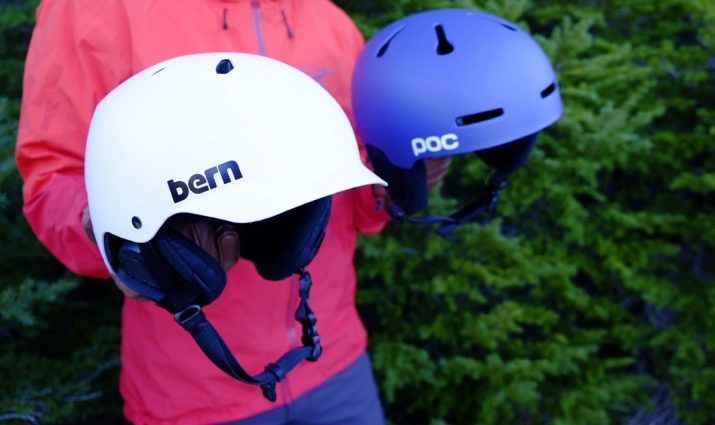
Criterias of choice
There are a number of nuances to consider when choosing the right helmet for skiing.
Visual inspection of structures
It is difficult for an uneducated buyer to determine the type of construction. However, for this it is enough to pay attention to the end of the visor and the edge of the back of the head:
- Hardshell has 2 layers visible, with a gap between the shell and the inner foam;
- the difference in In-mold is the visual adhesion of the layers along the edge;
- Hybrid can combine 2 differences of the previous types;
- it is enough to press on the Softshell, it will bend, without load it will straighten.

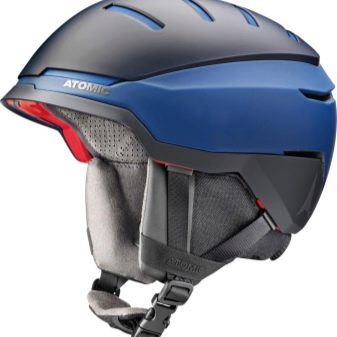
The weight
Weight is an important criterion. Particularly heavy options for active sports are not very comfortable. When worn for a long time, the neck becomes very tired.
The average ski helmet for an adult weighs 600-800 g. The weight of an analogue for a child varies between 400-600 g. When buying, you need to take into account: the weight is directly proportional to the level of protection (the lighter, the less reliable).
However, carbon fiber options can be considered as an alternative solution.
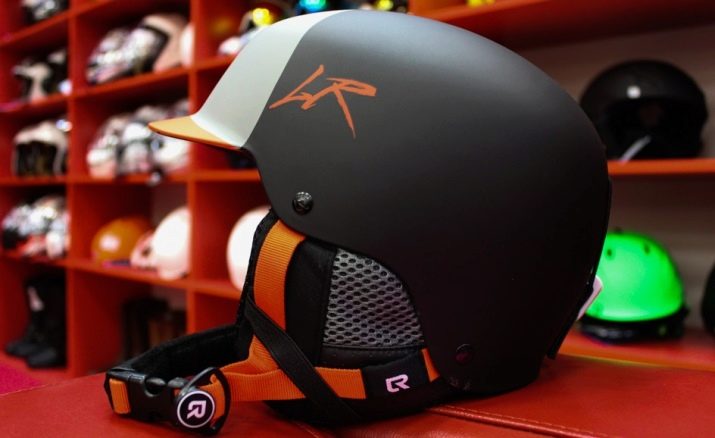
Fit and density adjustment
If the product does not sit tightly, in the event of a fall, displacement of the helmet and hitting the head against the inner shell cannot be avoided. You need to buy a product for alpine skiing, which has a tight fit adjustment. Design options may vary.
The simple type is the presence of replaceable liners. They are made of soft material and can have different thicknesses. Supplied complete with a helmet. For convenience, the fasteners are equipped with Velcro at the fixing points. These varieties are the best option for helmet-wearing athletes.
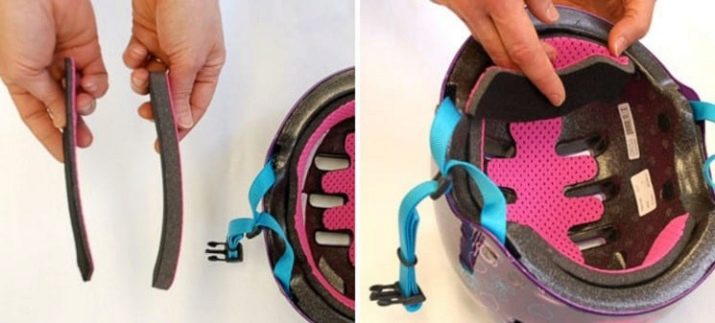
Other designs have a mechanical tightening or clips at the back. The volume of the helmet can decrease or increase as it rotates. The only drawback of the system is the volume change only in the rear.
BOA is an improved adjustment option in which the volume changes more evenly during rotation. It is a helmet with a ratchet at the back.
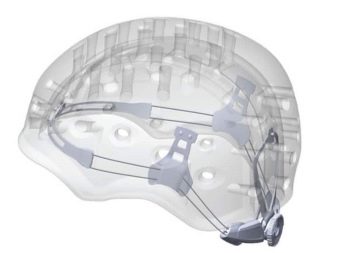
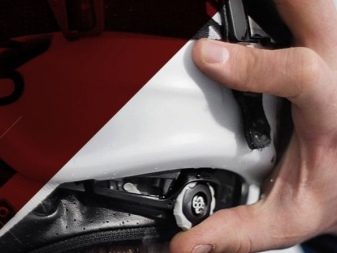
Custom AIR is a system for changing the volume in the form of reservoirs in the helmet, taking into account the anatomical features of the head. Increases when air is inflated with a simultaneous increase in uniform fit. Has better shock absorption.
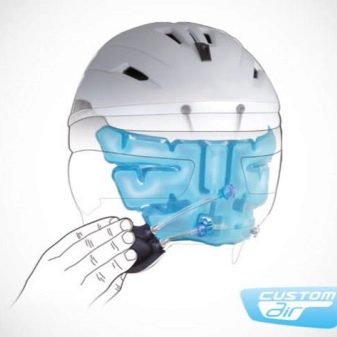
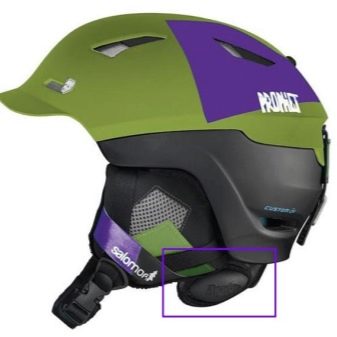
Ventilation types
In the variety of ski helmets, you can choose options without a ventilation system. However, most of the assortment is made up of analogs of the ventilated type.
The system can be passive or active. Products of the first group are not equipped with volume control. Ventilation is provided by openings on the helmet. Thanks to them, head fogging is excluded. The models are not suitable for steep descents, as the temperature differs markedly at different points on the slope.
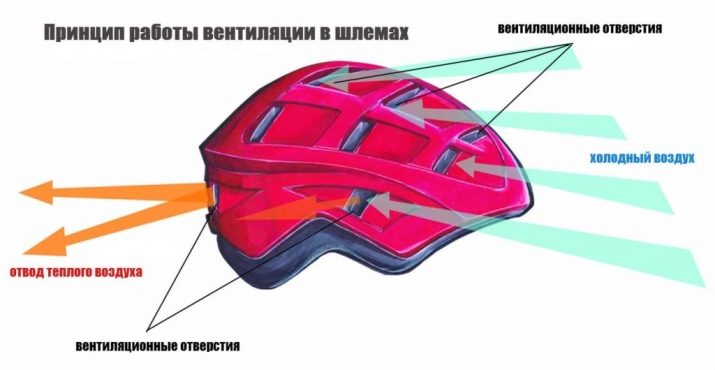
Analogues with an open ventilation system have special dampers in several places. They can be fully or partially closed and open. Ventilation ducts can extend from the frontal to the occipital region. Besides, on sale there are modifications with the redirection of the oncoming air flow into the mask.
This eliminates the possibility of fogging.
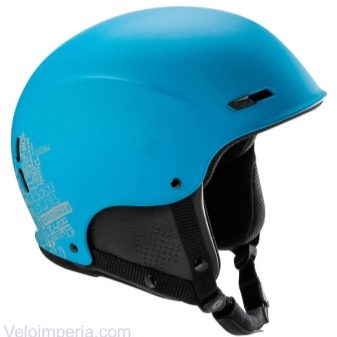
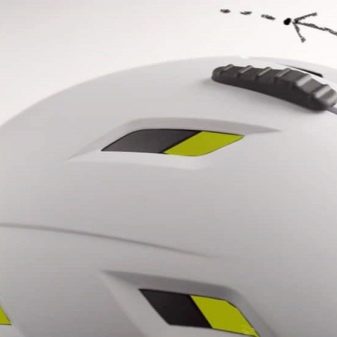
The nuances of fitting
It is impossible to buy sports equipment without trying it on. Having put on a helmet, you need to fasten it by adjusting the length of the strap. In this case, you need to pay attention to several factors:
- with a tight fit, pressure on the nose, cheekbones is excluded;
- the helmet should not squeeze the head;
- the design must fit the anatomical features;
- the helmet should not cover the frontal area;
- a finger should not be inserted between the helmet and the head.
Having chosen the best option, it is combined with a mask. It is not difficult to understand this: a suitable helmet will not push the mask onto the nose, but it will not push it back. The gap between them should be minimal.
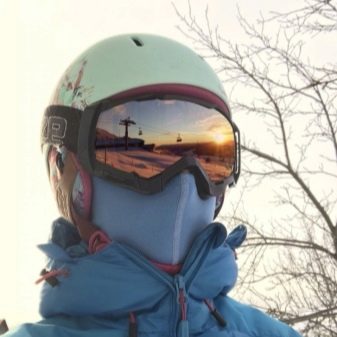
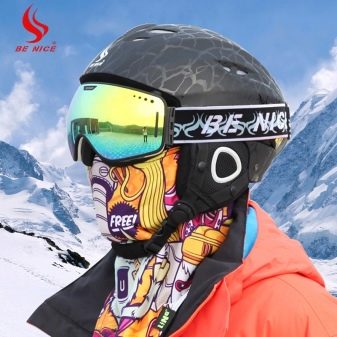
Care Tips
Caring for the selected product is simple, but must be timely. After rolling, it must be dried at normal room temperature.
You need to use a bag for storage. Storage place - closet or pantry. Do not put the helmet in the sun and store it near radiators or heaters.
Wash off the backing layer as it gets dirty. Every time before riding, you should inspect the condition of the helmet. If deformation or other damage is found, a new helmet should be purchased.
According to the manufacturers, the classic helmet is designed for a couple of years of active sports. After that, it may lose its original protection properties.









